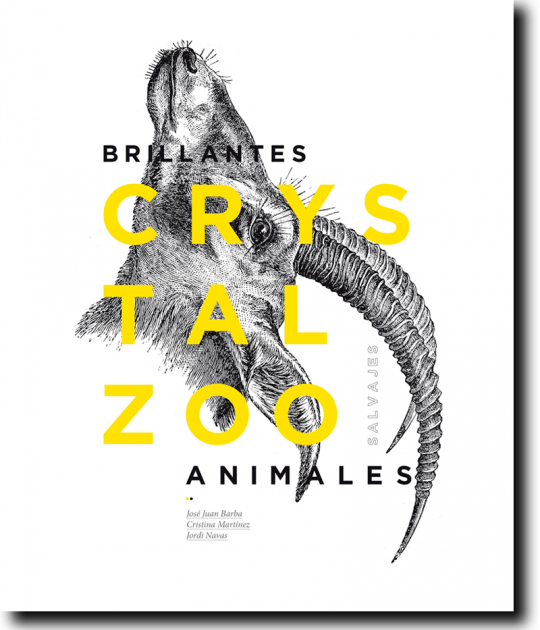CrystalZoo in this new building in La Nucia, continues to set strategies for attracting and improving healthcare and social services in this location. The project chooses, in its architectural condition, the remembrance of the city, with the intention of making a place with a clear and recognizable identity for the "neorural" tribe. Once inside the building, thanks to the perforations present in the concrete walls, they invite you to rediscover the reality and recognize a new human-environment relationship.
Description of project
The Mirador El Tossal Social Centre is located in the neighbourhood of the same name, El Tossal. It’s one of the new residential areas of the town of La Nucía that requires new social services infrastructure for its new inhabitants.
The project was designed taking into consideration two key objectives: to connect the neighbours, thereby building a community and to create a space to be used by that community. It’s a shared space in a rural area that has lost its agricultural character but that will be developed physically as a stage to highlight local attractions.
The building was planned as a place of meeting and neighbourhood interaction in a formal as well as informal way, as the building stands on the side of a 7-metre high hillside linking the upper street with the new square built on the lower level.
It’s designed like a large beam that uses the hill as structural support creating three meeting places: a space on the roof, an open space like a square under the building and a small interior space that contains an assembly hall, two offices and lavatories.
The roof also functions as a public lookout point that laterally looks over the hill. It’s a public reception space that collects the visitor on the upper level and accompanies him towards the interior of the installations.
The space created under the structure becomes an extension of the adjacent public space. The extension of the square features small spectator stands with the intention of providing residents with covered meeting space.
The third space, the interior, is simple: a small auditorium, two offices, lavatories and room for the elevator. Due to its small size, the stairway becomes a place of social meetings and interaction.
To structurally achieve these spaces, the building is a large concrete beam anchored to the land by a warehouse that counterbalances the projection of the structure. At the opposite end, the elevator acts as a support and stabilises the whole structure.
The facade is made of raw concrete and texture is added through the use of phenolic plywood board with almost no use of agents to preserve the marks of the wood shavings.
‘An interesting aspect was working on the piece as an OBJECT so that the joints showing the construction process couldn’t be seen. To do this we laid out pieces of OSB panelling alongside sunken pieces of plywood and we carried that out into the square.’
The intention was not only to compose but also to create different visual frames. A series of circular perforations were made in the façade which encourage visitors to enter this new space that’s somewhere between urban and rural. Along with the round windows, vertical grooves of various depths were designed creating a panel of light and shadow of different depths.
The materials used in the interior of the project create visual and spatial continuity by means of a coating of yellow epoxy resin on the floors and the walls that greet the visitor on the ground floor and accompany him to the auditorium.
The continuity also translates to the wood used on the floors that are also used on the angled sliding doors that provide access to the centre and on the fittings of the lookout point: a wooden bench that runs longitudinally along with the vegetation that separates it from the edge.
On the exterior, an urban refurbishment was carried out that created new geography, including hills on the slope and a large number of centuries-old olive trees that along with the existing pine grove emphasise and frame the views of the countryside.
Its creators show us the building perceived as a worm that comes out of the earth dynamically and leans on it, mutating through the day, changing its textures until when night falls the yellow interior stands out, spreading outwards through its multiple circular eyes.
Text.- José Juan Barba

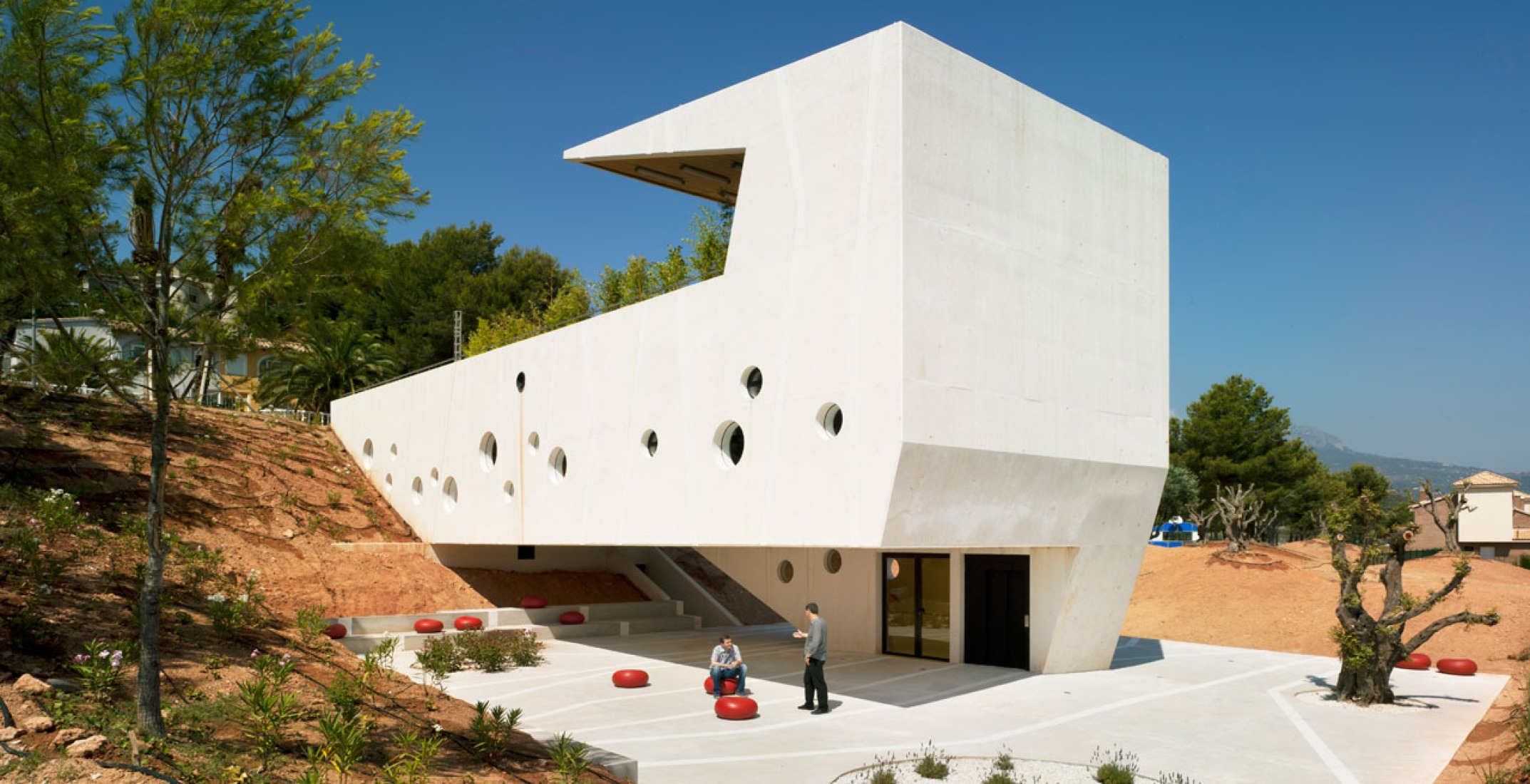
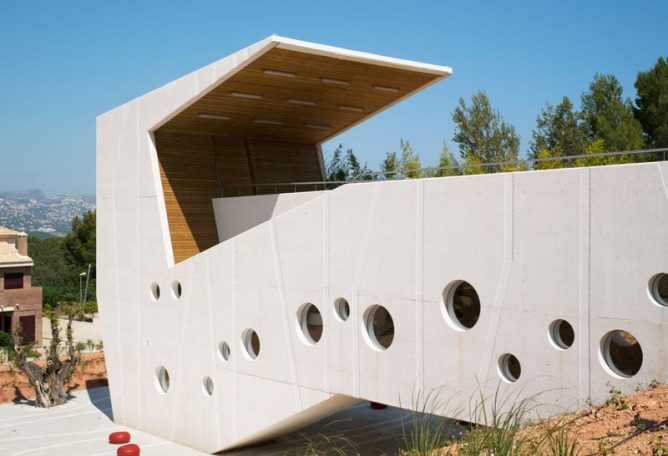
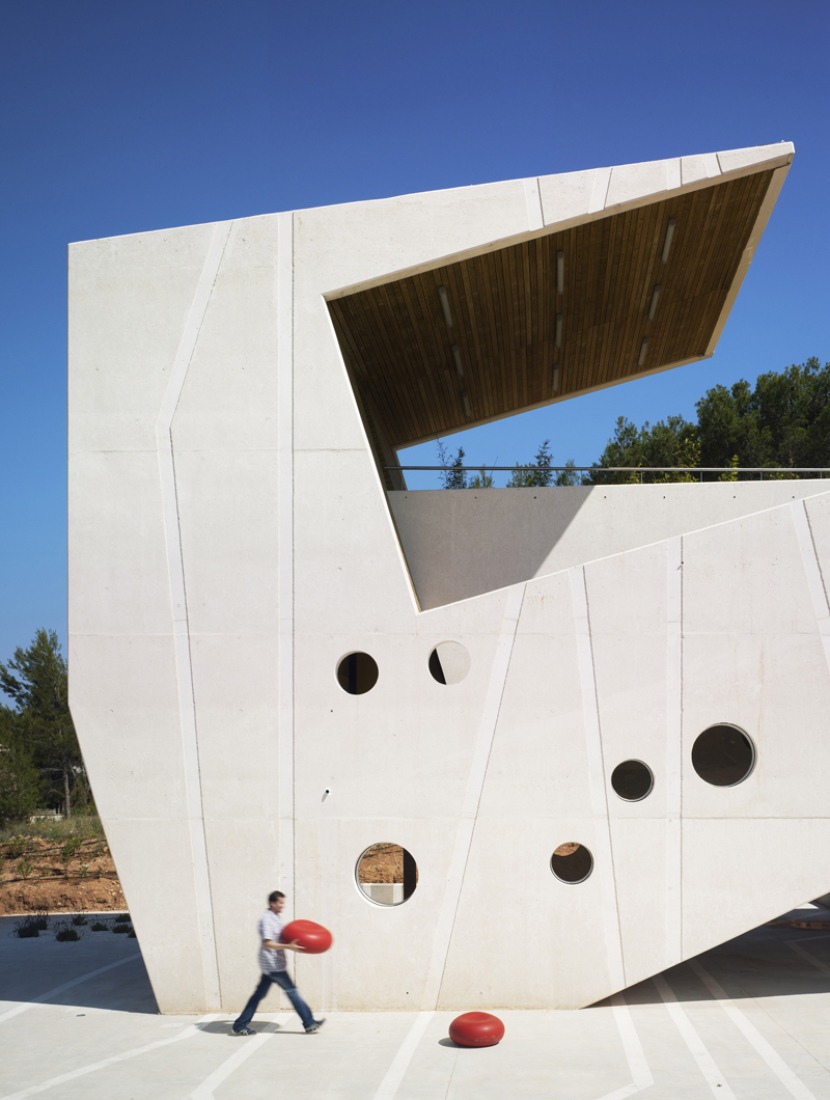
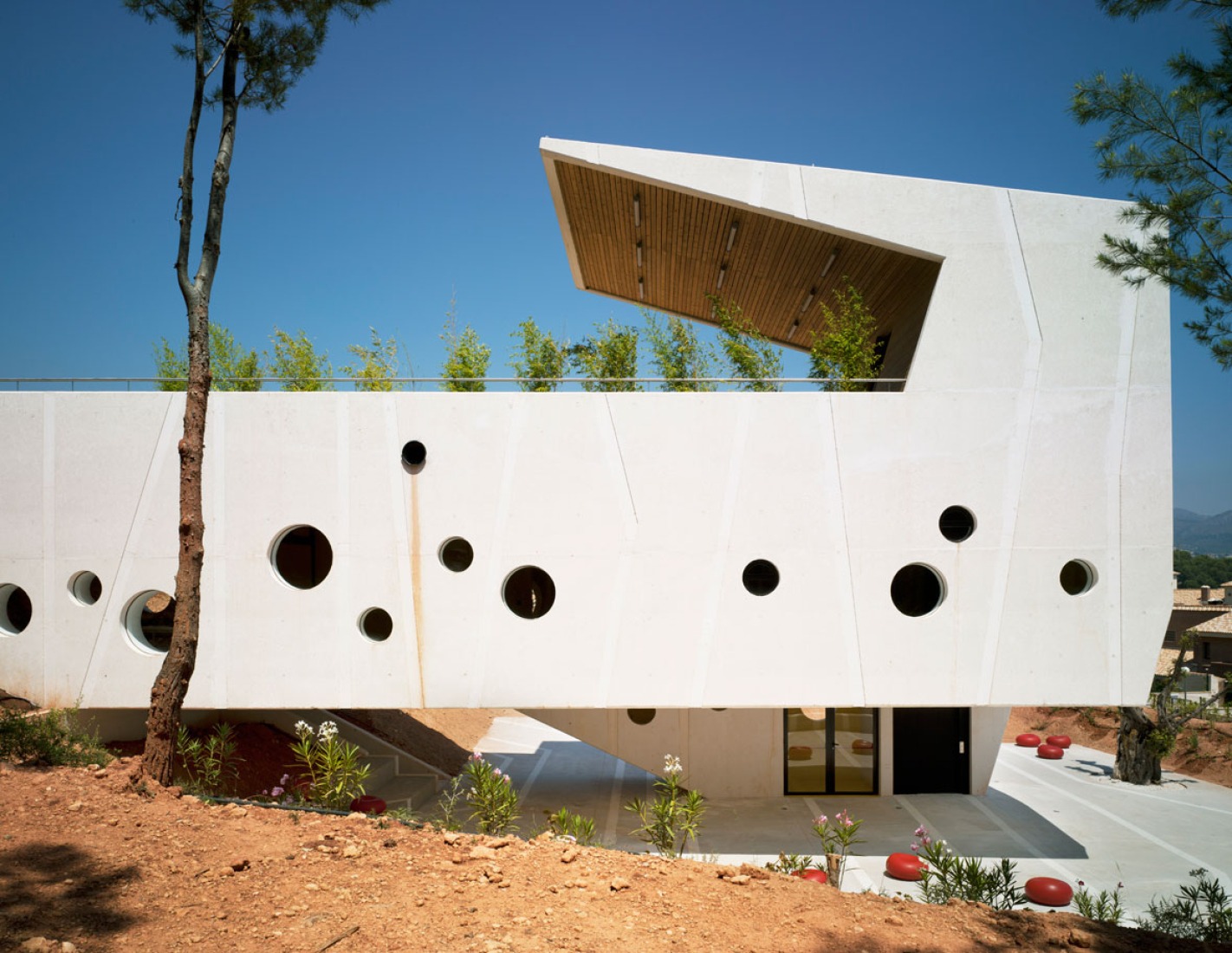
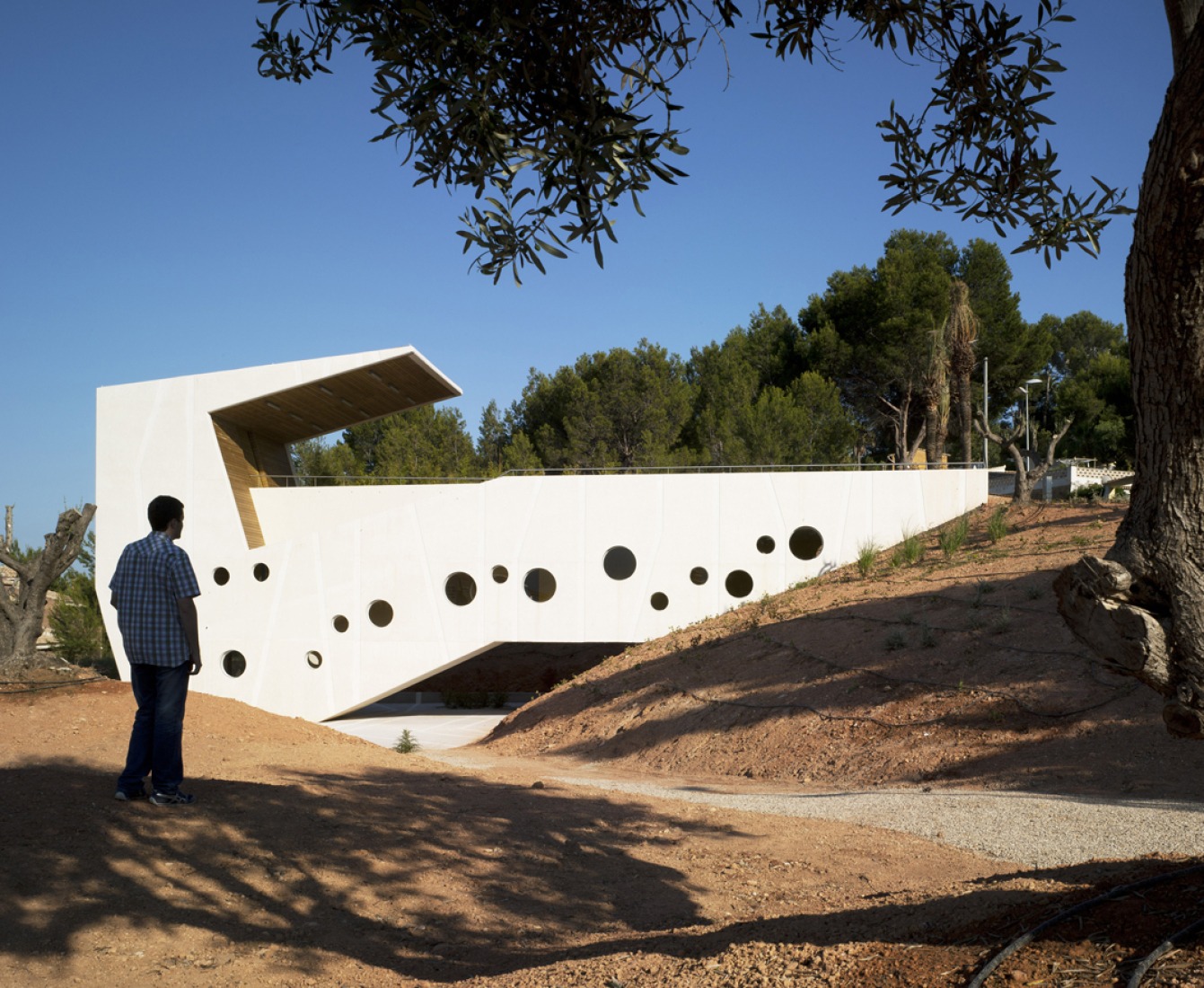
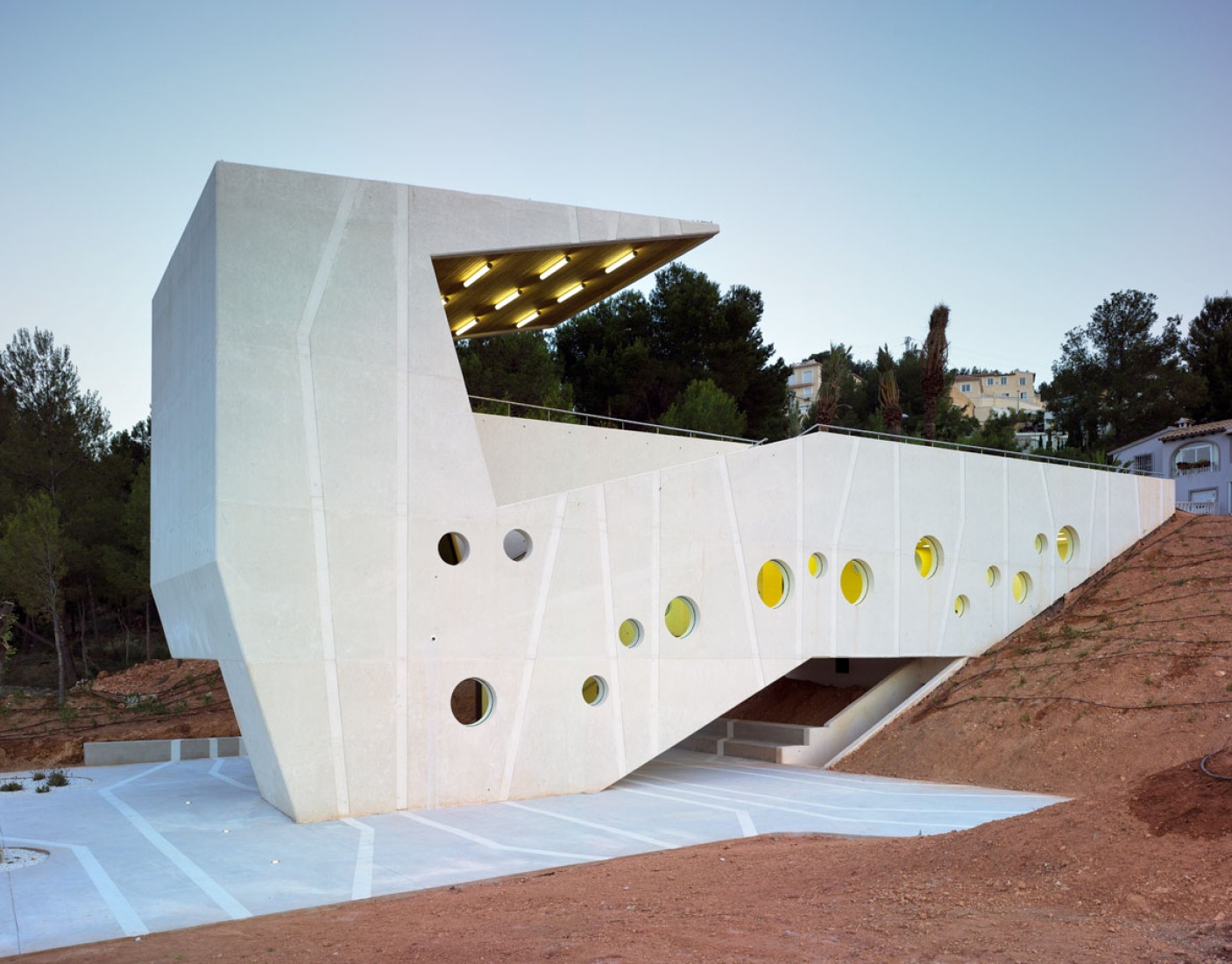
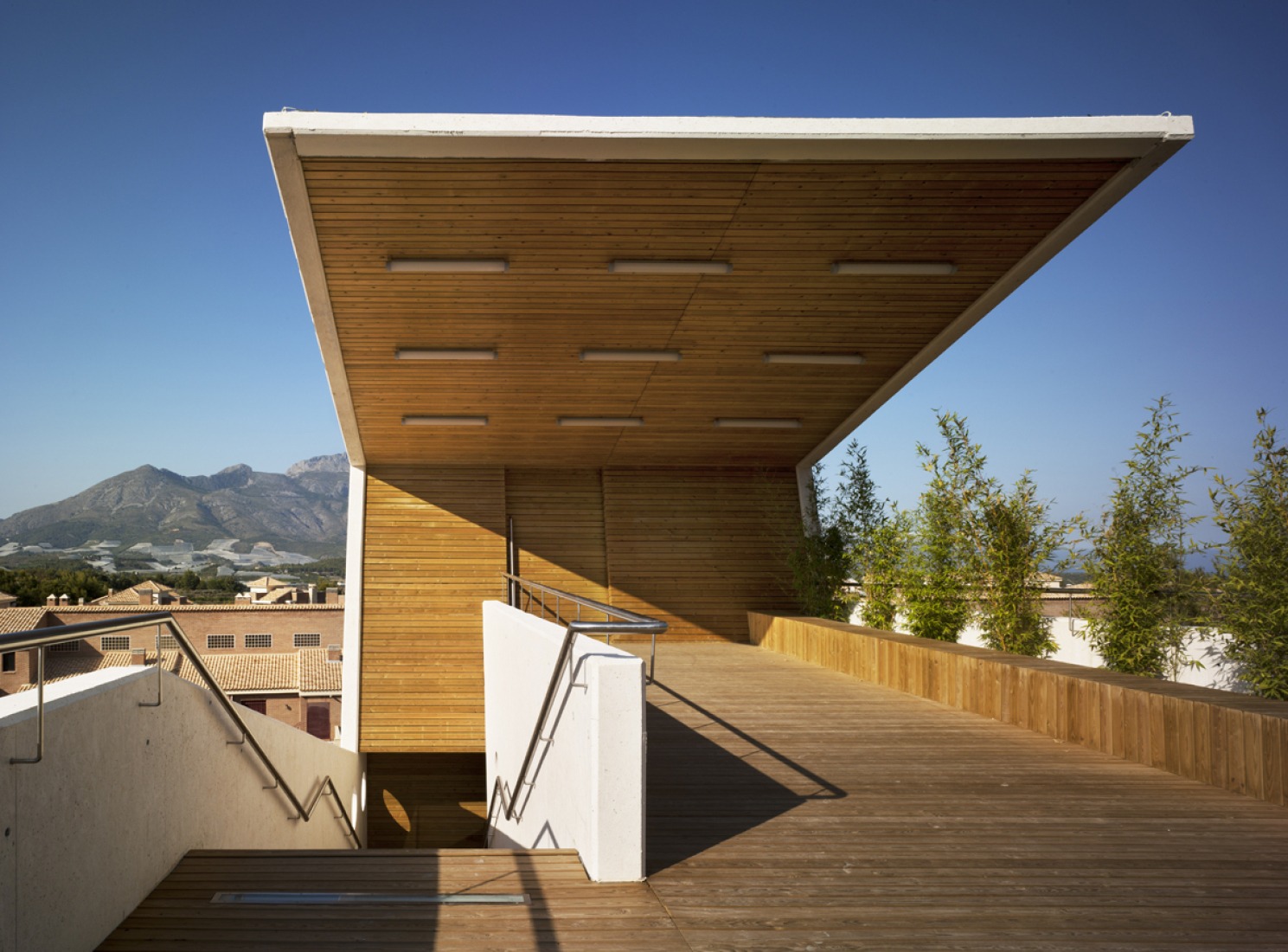

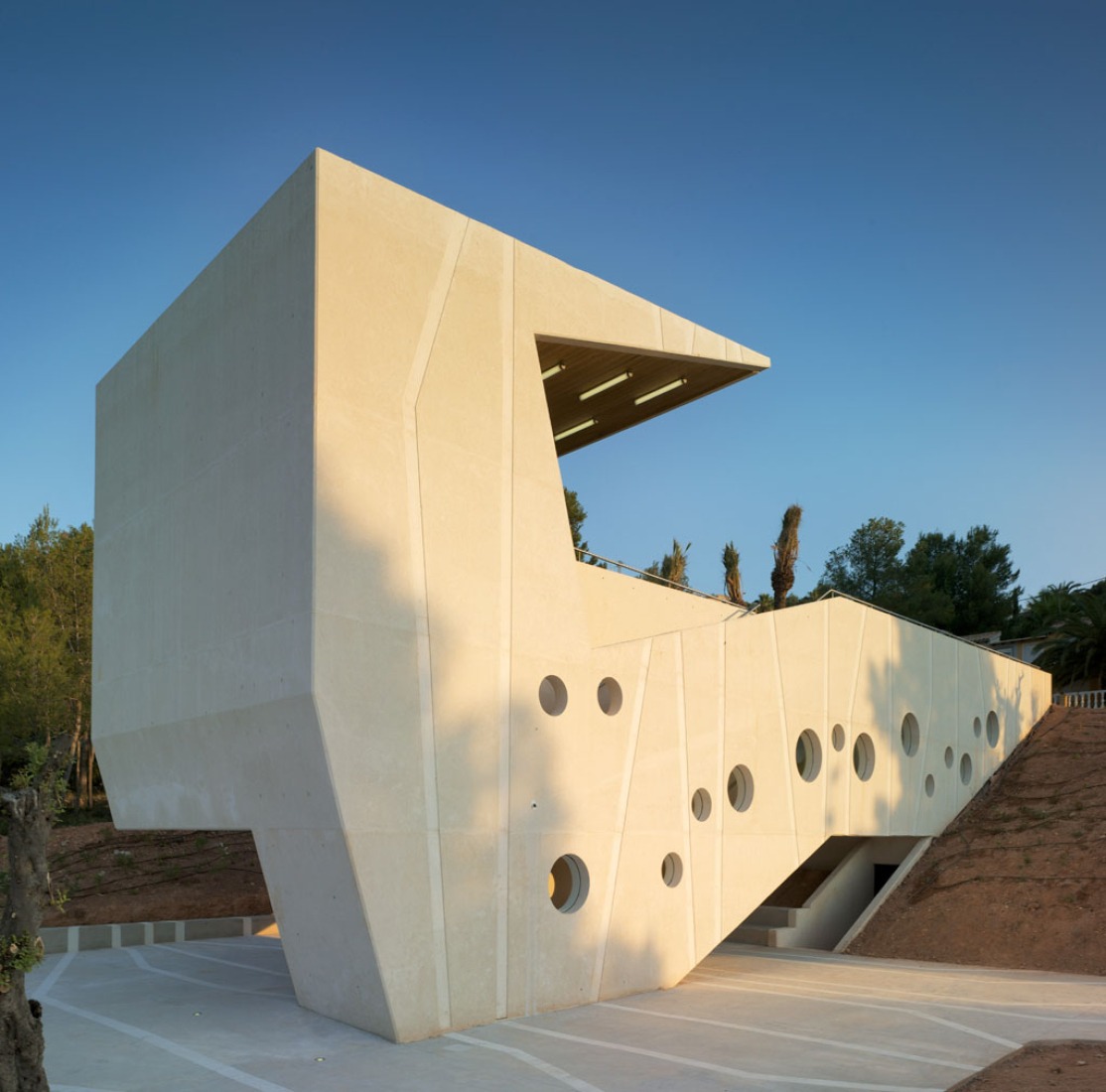
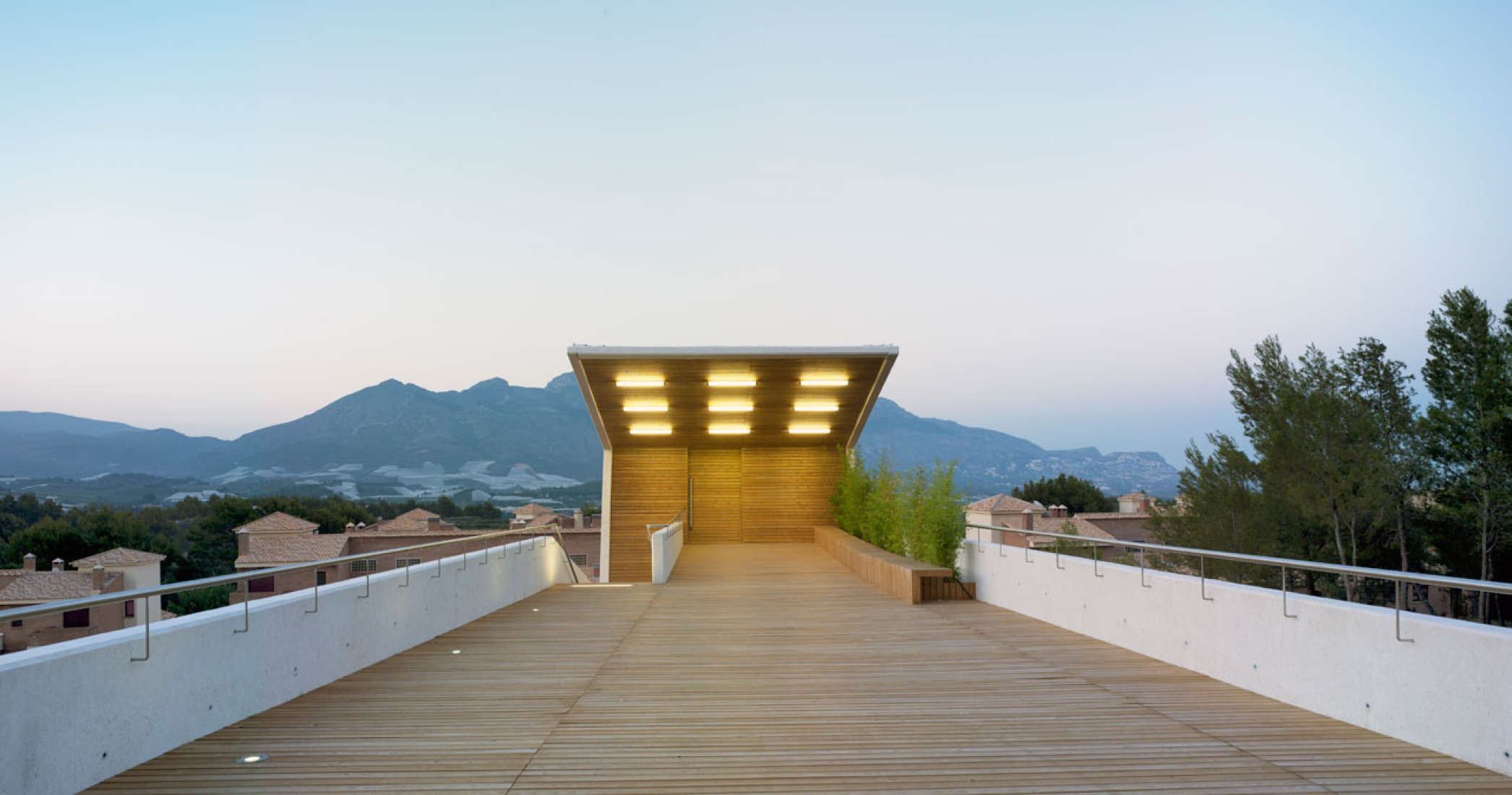
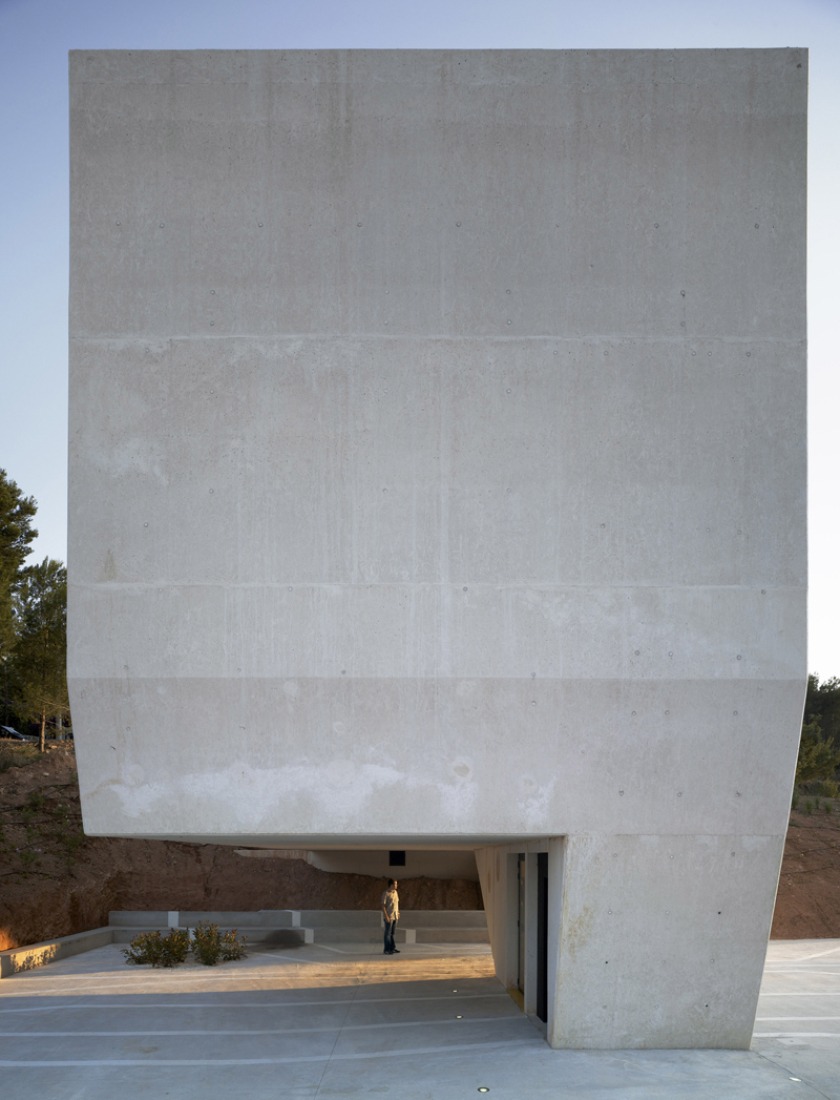
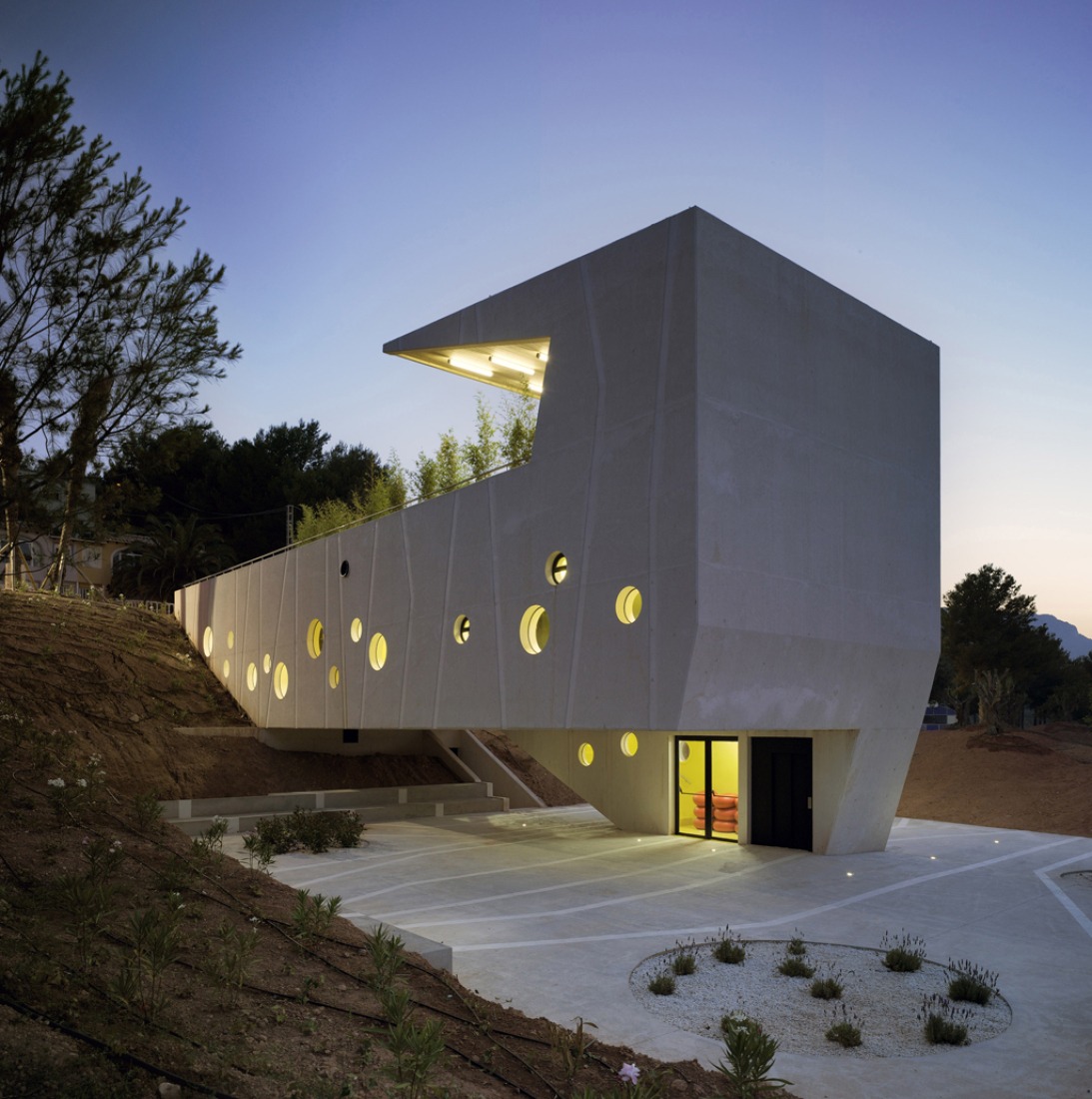
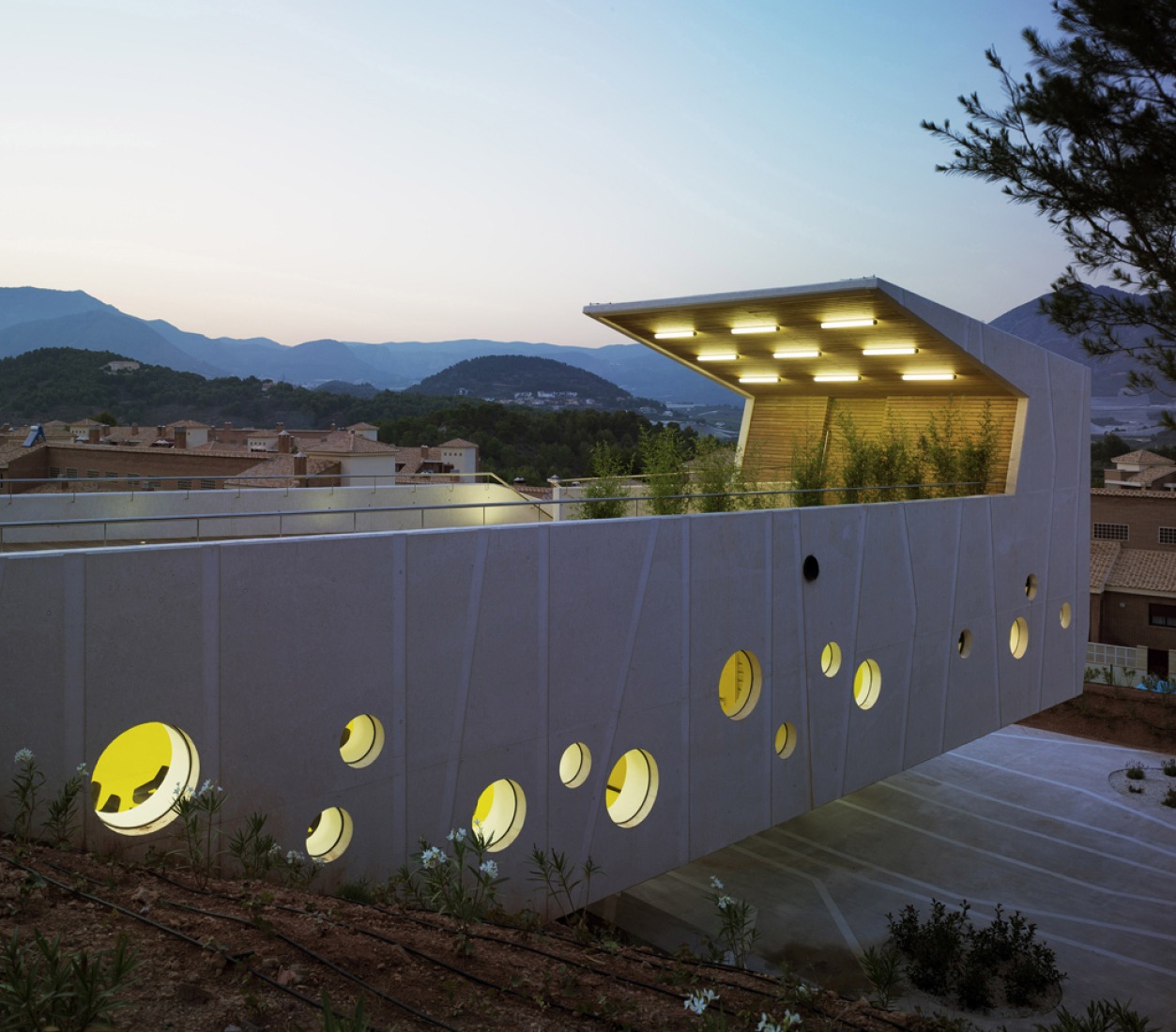

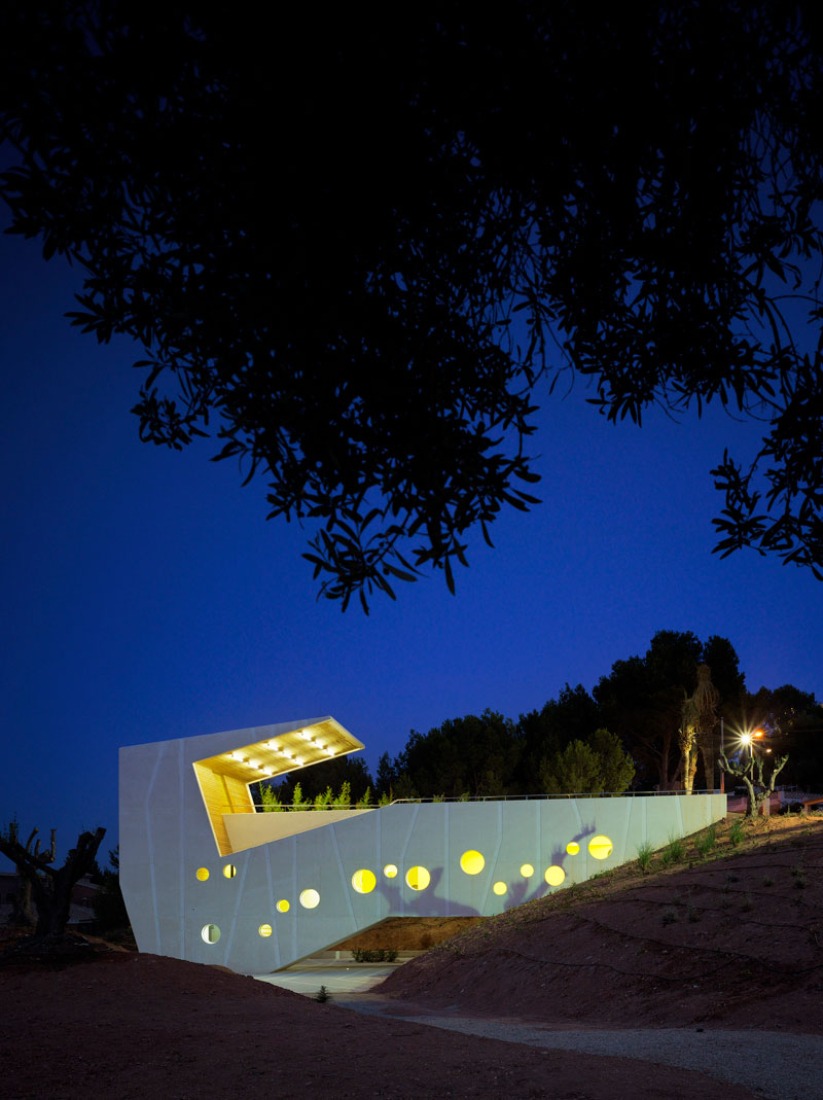
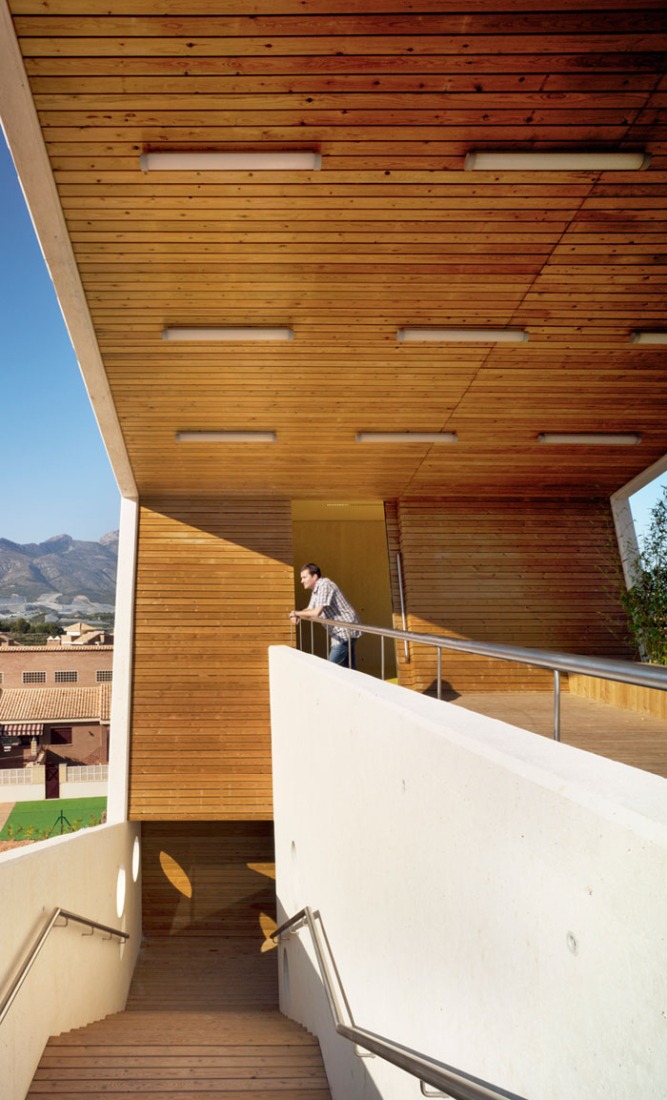
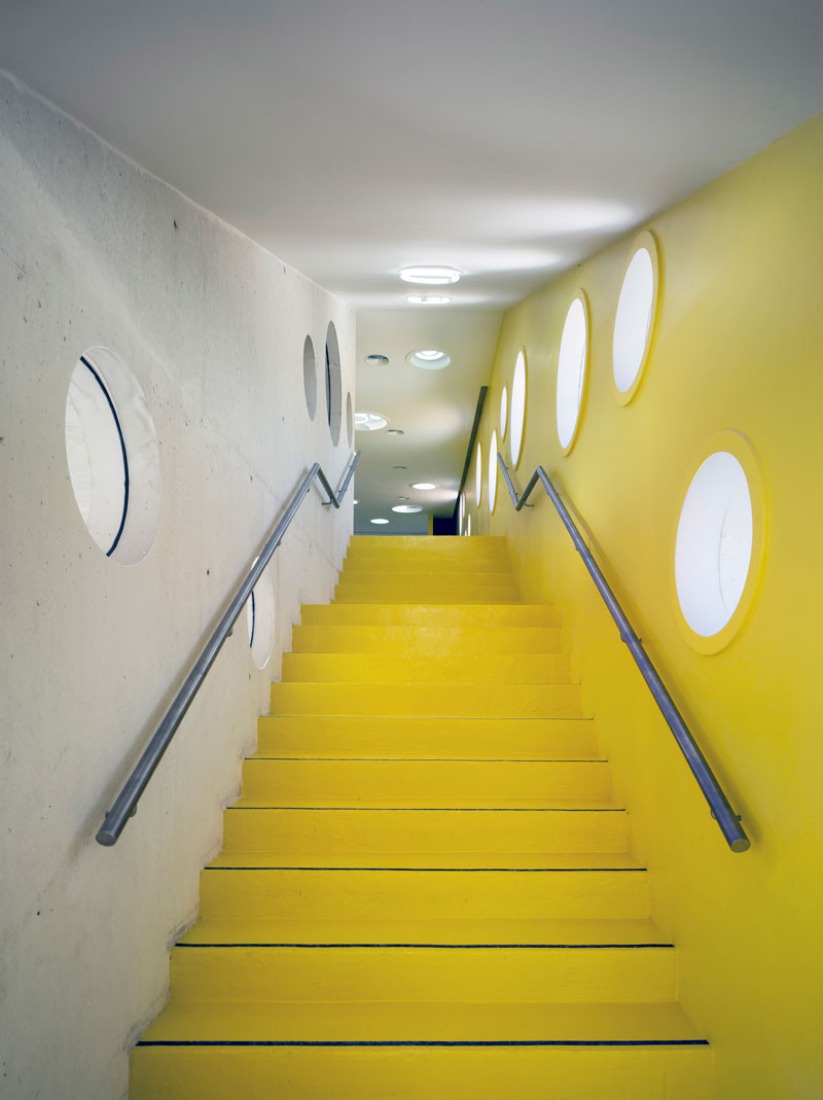
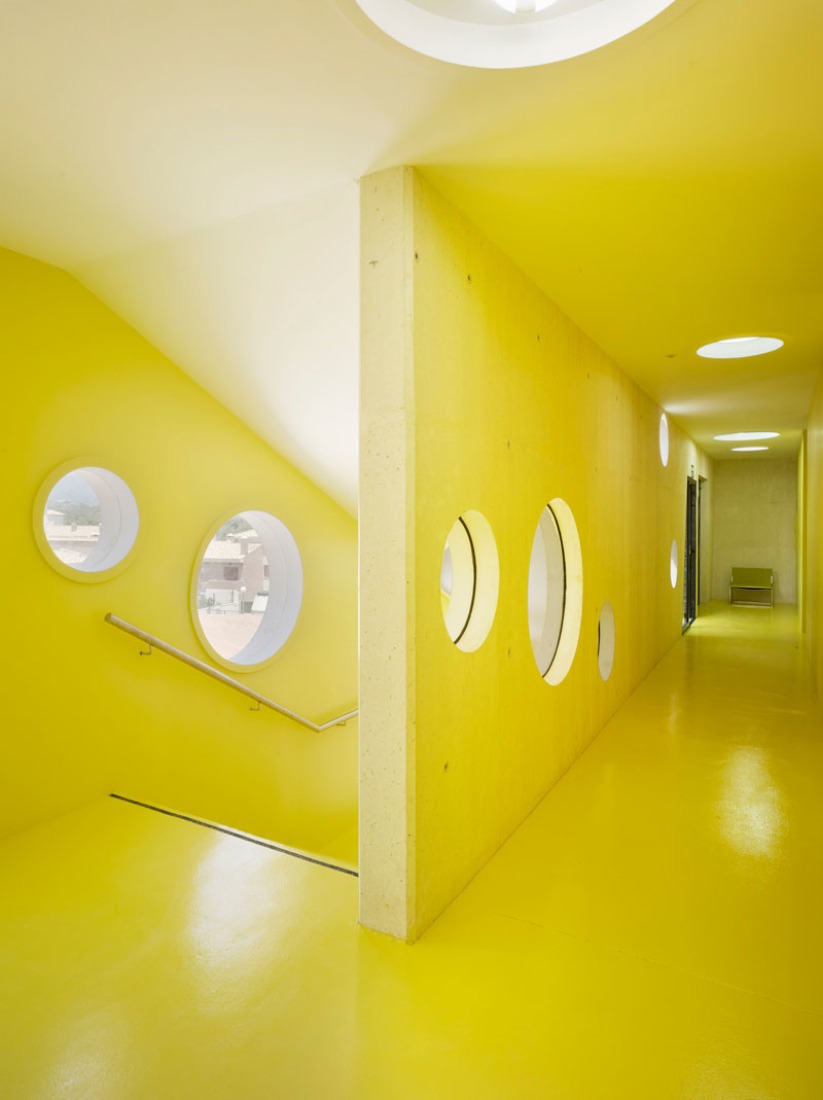
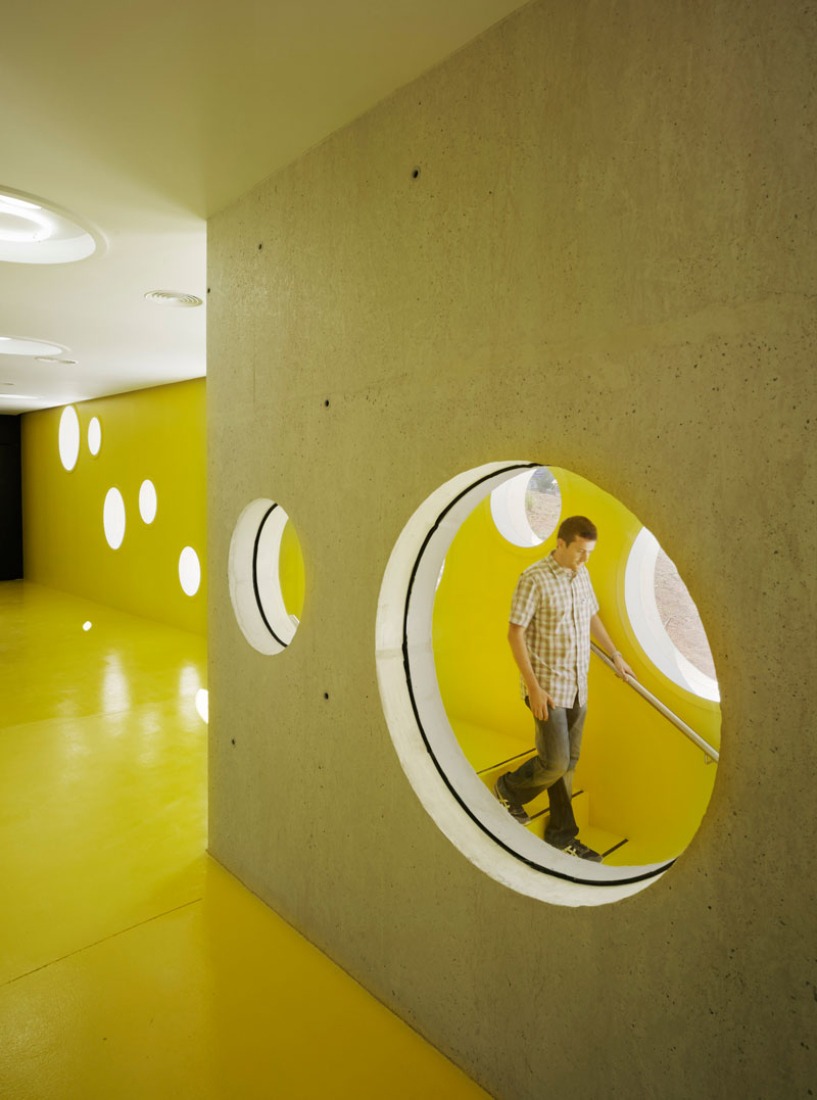
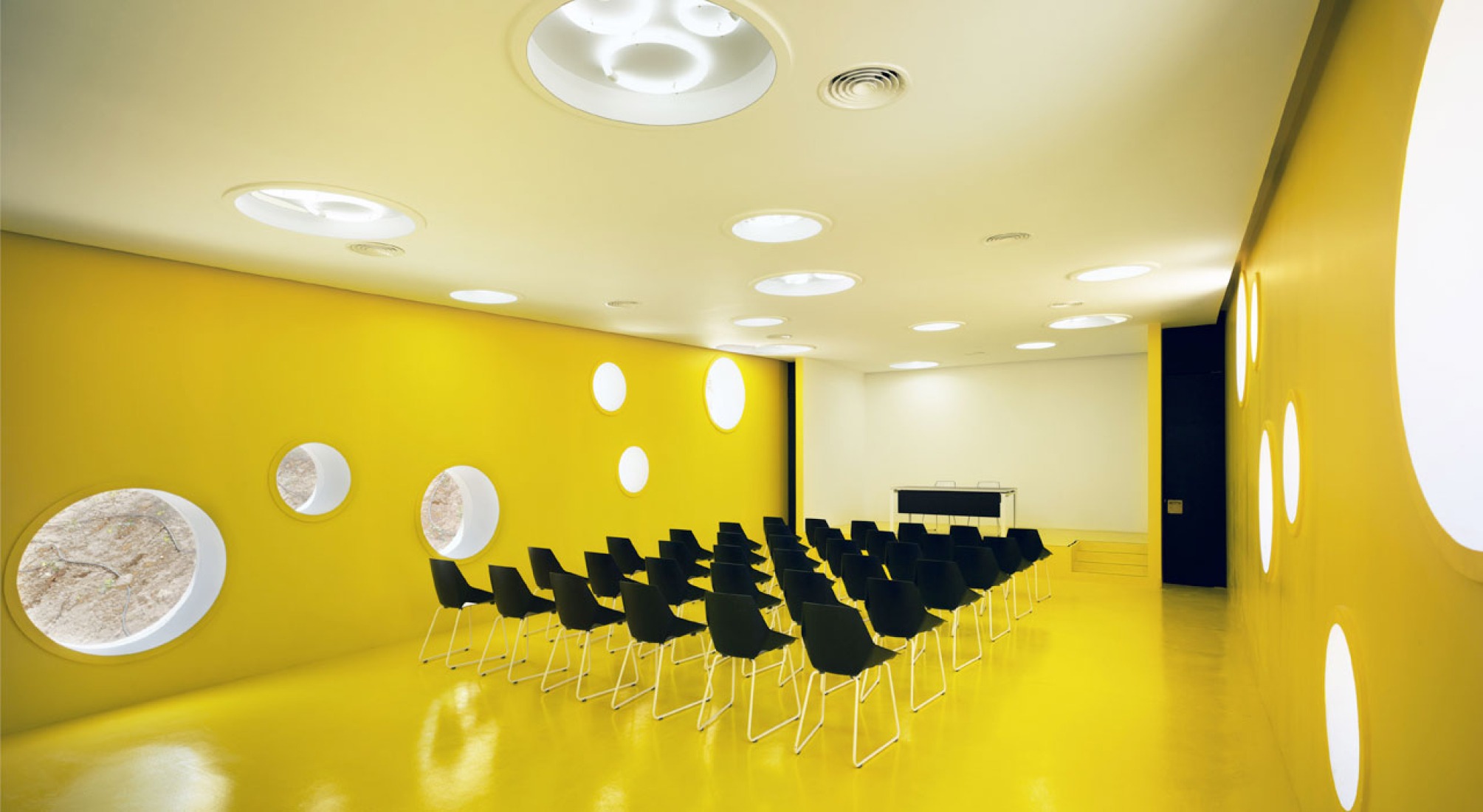
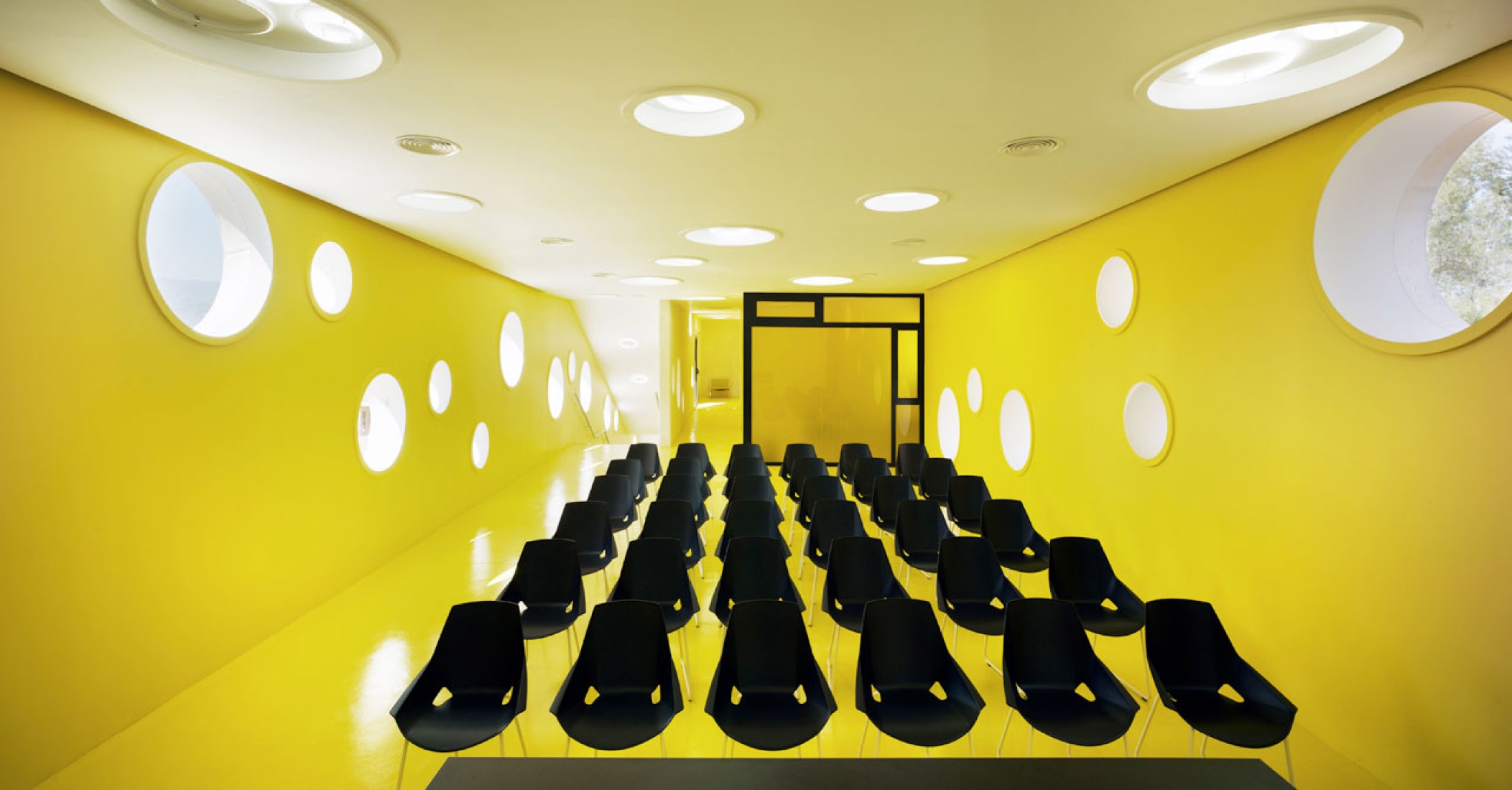

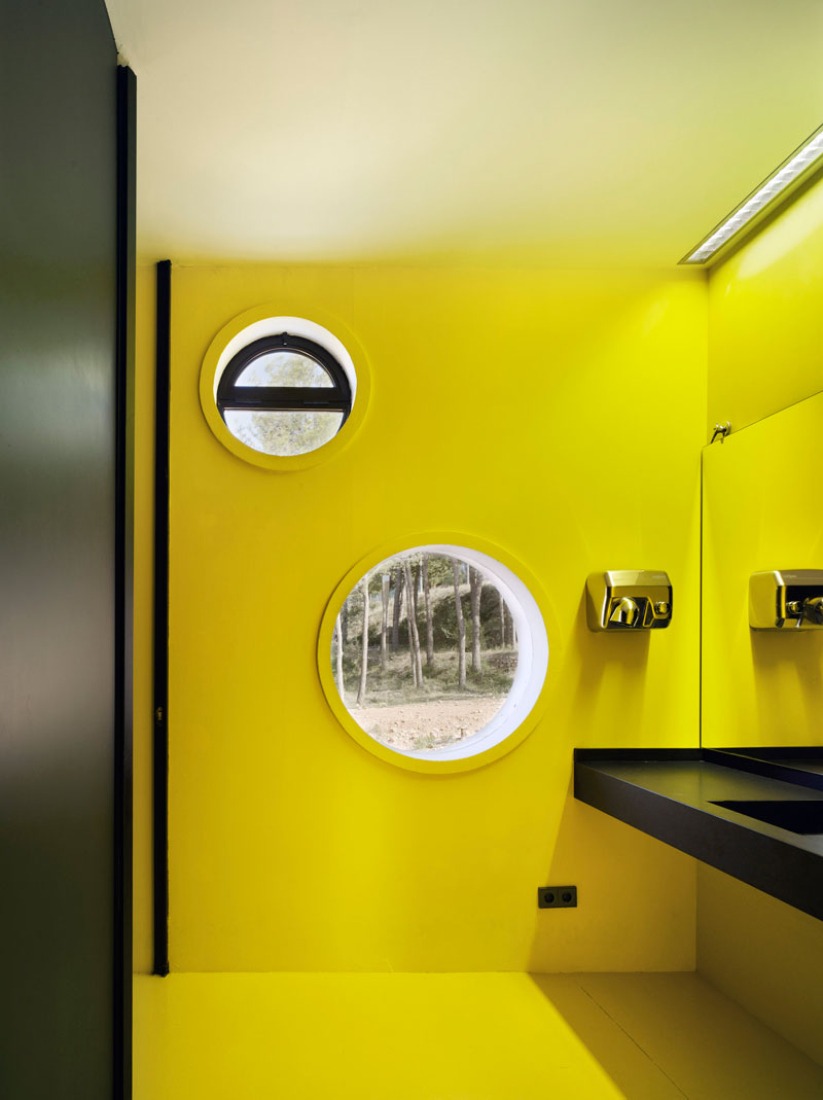
















![10 Architecture Studios Led by women [XII] 10 Architecture Studios Led by women [XII]](/sites/default/files/styles/mopis_home_news_category_slider_desktop/public/2025-03/metalocus_10-arquitectas-xi_01b.jpg?h=3b4e7bc7&itok=KFjWtS5J)






